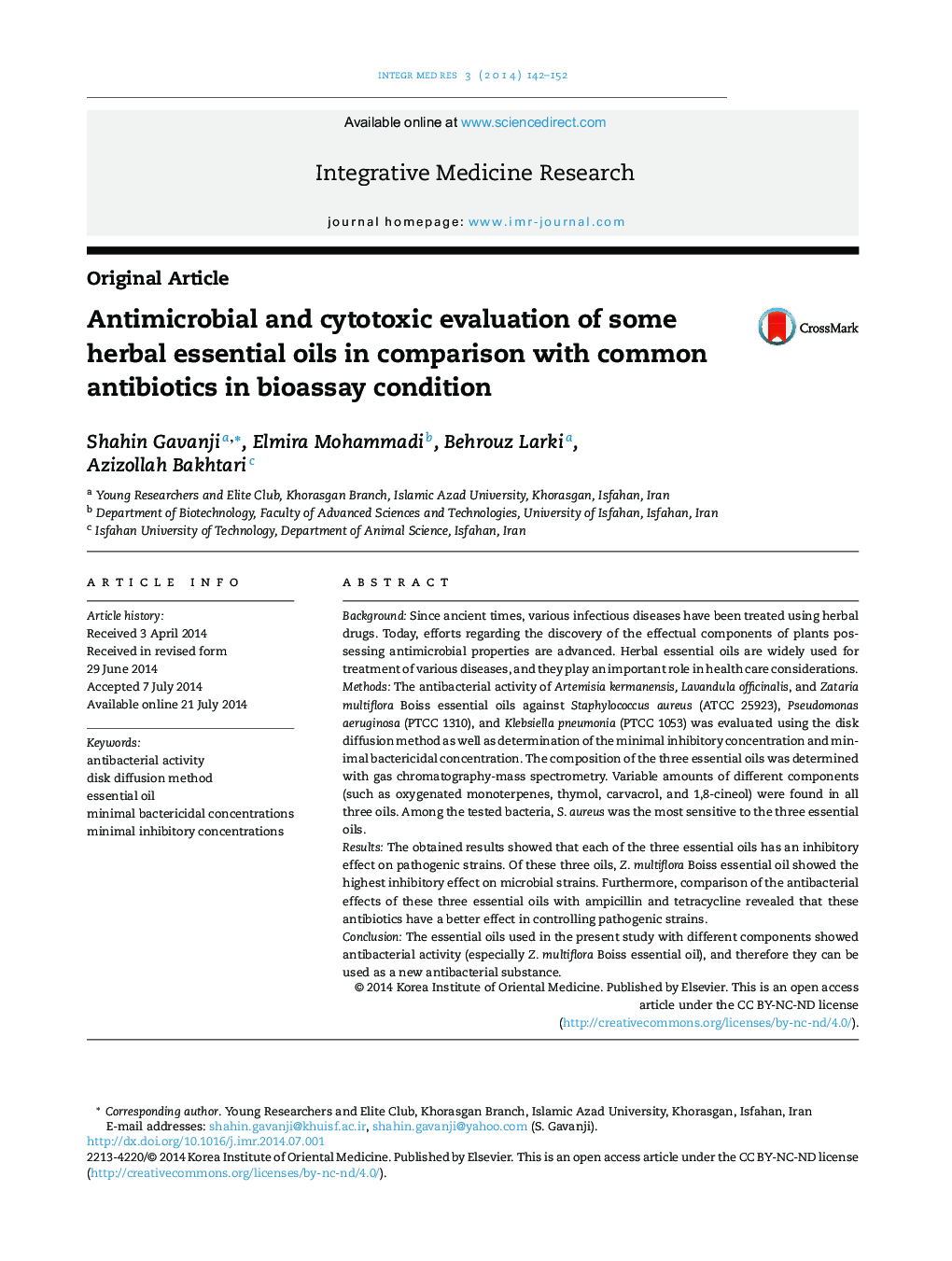| Article ID | Journal | Published Year | Pages | File Type |
|---|---|---|---|---|
| 3098295 | Integrative Medicine Research | 2014 | 11 Pages |
BackgroundSince ancient times, various infectious diseases have been treated using herbal drugs. Today, efforts regarding the discovery of the effectual components of plants possessing antimicrobial properties are advanced. Herbal essential oils are widely used for treatment of various diseases, and they play an important role in health care considerations.MethodsThe antibacterial activity of Artemisia kermanensis, Lavandula officinalis, and Zataria multiflora Boiss essential oils against Staphylococcus aureus (ATCC 25923), Pseudomonas aeruginosa (PTCC 1310), and Klebsiella pneumonia (PTCC 1053) was evaluated using the disk diffusion method as well as determination of the minimal inhibitory concentration and minimal bactericidal concentration. The composition of the three essential oils was determined with gas chromatography-mass spectrometry. Variable amounts of different components (such as oxygenated monoterpenes, thymol, carvacrol, and 1,8-cineol) were found in all three oils. Among the tested bacteria, S. aureus was the most sensitive to the three essential oils.ResultsThe obtained results showed that each of the three essential oils has an inhibitory effect on pathogenic strains. Of these three oils, Z. multiflora Boiss essential oil showed the highest inhibitory effect on microbial strains. Furthermore, comparison of the antibacterial effects of these three essential oils with ampicillin and tetracycline revealed that these antibiotics have a better effect in controlling pathogenic strains.ConclusionThe essential oils used in the present study with different components showed antibacterial activity (especially Z. multiflora Boiss essential oil), and therefore they can be used as a new antibacterial substance.
